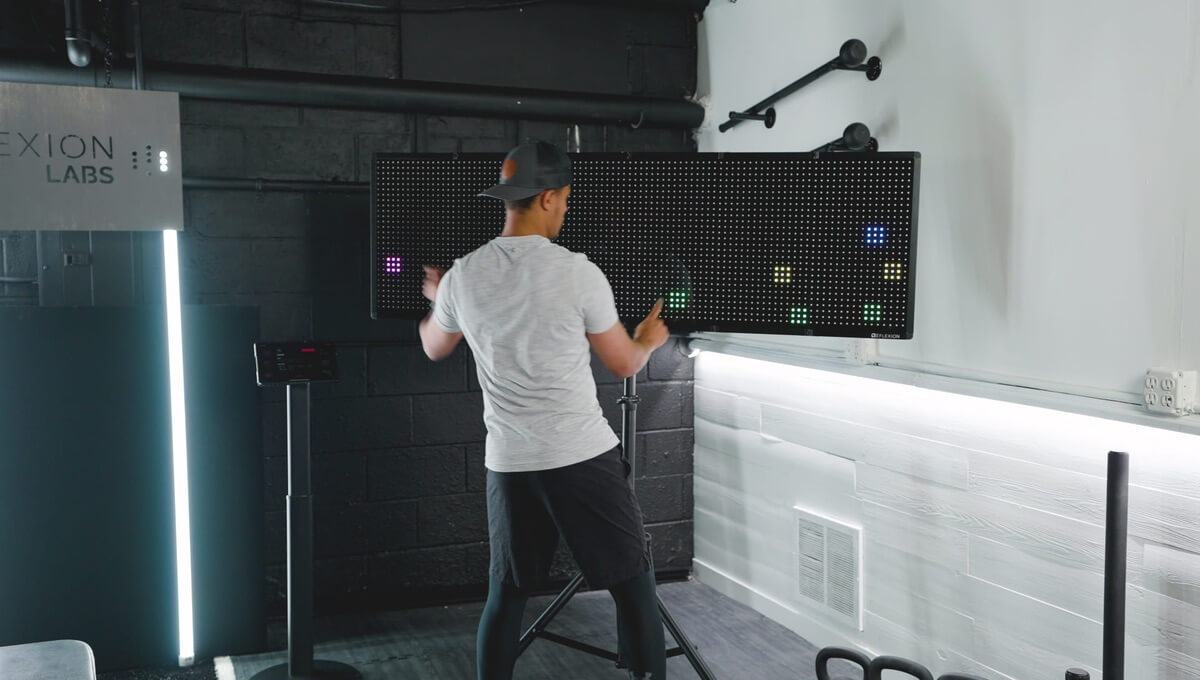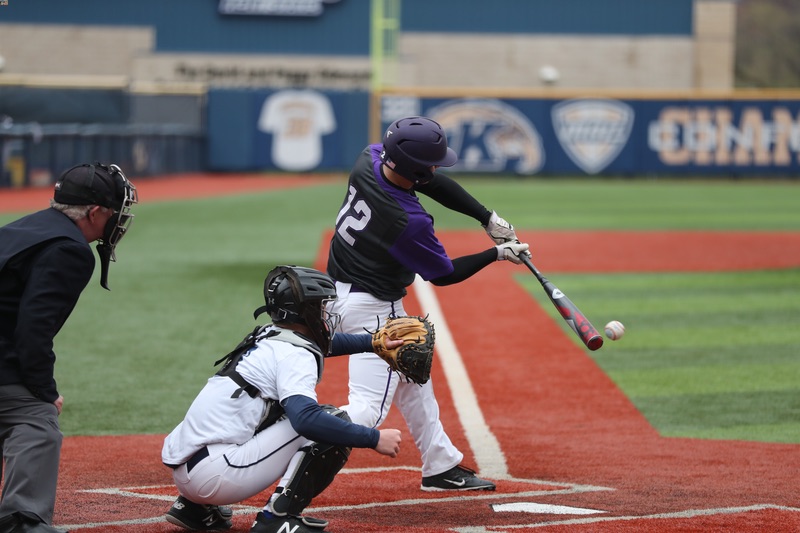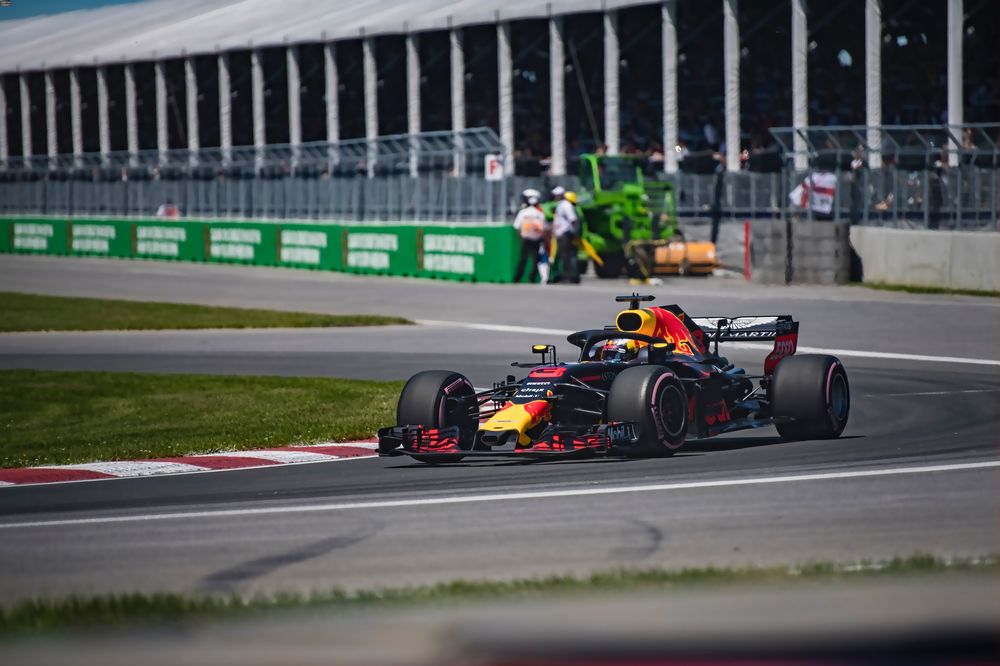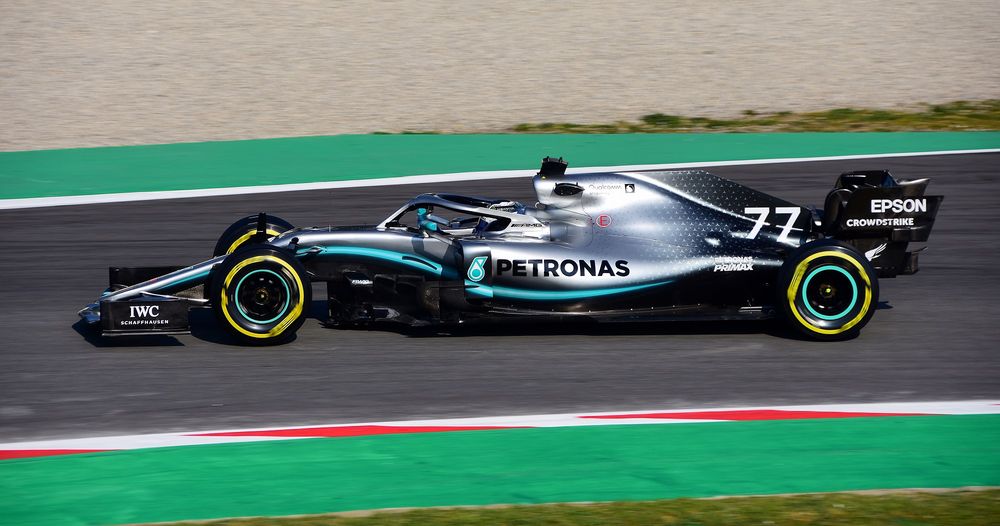Learning how to become a better athlete is a lifelong pursuit. There are a number of ways you can improve, and the methods at your disposal are changing all the time!
This list covers the fundamental techniques and strategies you can use to become a great athlete and find more success during competition. Take this to heart, and watch your performance improve!
1. Write Down Your Goals
Setting long-term goals is a great way to stay motivated and become a better athlete. Not only can you identify what it is you’re trying to achieve, but you can figure out how you’re going to make it happen.
Think about what you want to accomplish on a grander scale.
Many athletes tend to focus on the short-term. While that’s great for experiencing incremental successes, thinking only about what you need to get done today could ultimately hold you back.
When you think about your long-term goals, it’s much easier to make the right decisions to help you get there. Suddenly, skipping out on a training day or binging on that unhealthy meal doesn’t seem so appealing.
Jot down your goals on a piece of paper and display them somewhere where you can them. Use that note as a reminder of what you’re trying to achieve. Later on, you can use it to check on your progress and figure out what changes you need to make to push yourself even further.
2. Have a Good Diet
You can’t expect to see improvements in your performance if you’re not fueling your body right! While you might be working out more than the average person, a poor diet is going to have ill effects on your body just the same.
Fatty foods, junk snacks, and sugary drinks will hamper your progress. Unhealthy foods put unnecessary stress on your body and affect the recovery process.
It’s not easy making dietary changes, but the effort is well worth it. Start by cutting back on the unhealthy stuff. Then, try introducing some more fruits, vegetables, whole grains, and lean protein into your diet.
Avoid extreme diets and convoluted diet plans. The goal here is to make a lifestyle change that will support your endeavors in the long-run.
If you need some extra help, consider going to a dietician or nutritionist. They can help you get on the right track by making meaningful changes that stick!
3. Master the Fundamentals
Athletes are notorious for wanting to dive head-first into an intense training regime. The effort is admirable, but it often leads to injuries!
You need to have a good grasp of the fundamentals. Even if you’re a seasoned athlete, you could benefit from exercises that are designed to improve your foundation.
Focus on those building blocks before you jump into the intense stuff. This means doing aerobic exercise, general strength building, mobility drills, and body conditioning. All of these fundamentals can make a drastic difference in how your body responds to heavier workouts.
For one, it prepares the body for intense training later. Mastering the fundamentals reduces your chances of injury and gives you the tools to go harder.
Secondly, fundamentals build your stamina. With proper preparation, you can work out longer and harder without getting fatigued quickly.
4. Be Consistent and Don’t Expect Results to Come Immediately
Consistency is key when you want to be a better athlete. No great athlete got to where they are today by skipping workouts and slacking off.
There are going to be days when you don’t want to train. But, you need to get motivated and do it anyway!
Dedicate a set amount of time each day to train. Even if it’s just 30 minutes a day, that consistency will make all the difference. Your body will improve the longer you stick to it.
Furthermore, it helps build discipline. Staying consistent will make you stay on track and put you that much closer to your goals.
It can be hard to go months without seeing the results you want. But be patient! Experiencing results take time!
The last thing you want to do is over-exert yourself in an attempt to improve faster. That will only backfire on your by slowing down your body’s recovery.
Be consistent in your workout routine and practice self-discipline. You’ll get there soon enough!
5. Improve Core Strength
It doesn’t matter whether you’re a cross-country runner or a football player, core strength is essential.
Most don’t realize it, but your core is easily one of the most important muscle groups in your body. It affects all other muscle groups and keeps your entire body in balance.
A weak core can make you vulnerable to injuries. So, make core training a part of your workout routine. Do some ab workouts, burpees, planks, and more. Mix things up to ensure that every single muscle in your core is getting the workout it needs.
6. Push Your Limits
The longer you train, the easier your workouts are going to seem. While it might be satisfying to see that tangible progress, it’s not a good thing!
You should always aim to push your limits.
When athletes get comfortable, they stop getting better and plateau. The body isn’t having to work as hard to complete those exercises, so people get complacent. Ultimately, this will prevent you from seeing any more results.
The only way that you’re going to improve is by pushing harder and trying to go beyond your “best.”
Consider testing your performance every once in a while. Do some timed drills or test your strength. Keep track of what you’re capable of and use those benchmarks as a baseline.
7. Improve Your Sports-Specific Strength
Fundamentals and overall body conditioning are important. However, you also need to focus on skills that are specific to your sport.
If you’re a quarterback, you might focus on sprinting and agility. If you’re a cyclist, you may want to train your legs harder and build up endurance.
Whatever the case may be, formulate a workout that complements what you’re going to be doing on the field. This will build strength in areas that matter and stabilize your muscles.
It also familiarizes your body with the mechanics you need to succeed. Perform drills that replicate what you do in your sport and continually push your body further. You can do this as part of your core workout or in your warmups.
Building strength in those key areas will improve your overall performance and decrease your chances of injury.
8. Train Your Brain
It’s not just your body that you have to train to become a better athlete. No matter what sport you play, your cognitive abilities have a big impact on how you perform.
When you’re on the field, you have to identify opportunities, make split decisions, and tell your body to react. All of this happens within a fraction of a second.
And even a minor delay can ruin the play.
Brain training combines physical movements with physical responses. There are many different forms of cognitive training, but they all can provide you with serious benefits.
Depending on the particular exercise you perform, you can improve peripheral vision, reaction times, hand-eye coordination, and more (Reflexion covers everything by the way).
Implementing some neuro-training exercises into your routine might not seem like much. But like physical training, you can see incremental improvements over time. When the time comes to test your performance, you’ll have improved cognitive abilities.
9. Warm Up Properly
This should go without saying, but warming up your body before training is a must! You need to prepare your body for the rigorous workout ahead.
Warming up loosens the muscles and mobilizes your joints. This can help you perform better and prevent injuries.
You’re not doing your body any favors by skipping a warmup. Don’t make the mistake of thinking that the first 10 minutes of your routine is your warmup.
When you start training with tight muscles, you’re depriving them of oxygen. As a result, you’ll just end up feeling tired more quickly.
10. Cross-Train
Cross-training is the act of training in activities that are not part of your main sport. Say, for example, that you’re a runner. You probably focus on endurance training and performing unilateral movements.
To cross-train, you could practice lateral movements to strengthen your hips. You might also work on building muscle strength.
The point of cross-training is to improve your overall fitness levels and encourage the fast recovery of your entire body. Cross-training can also help you prevent injuries by targeting parts of the body that you don’t necessarily use in the sport.
Start by focusing on core fitness components that you normally don’t prioritize. This could be anything from agility to balance.
Over time, the benefits that you experience from cross-training can help you see improvements in your sport.
11. Develop a Training Schedule
Finding time throughout the week to train is not always easy. Athletes with full-time jobs or families often have to carve out time in their day in order to train and get better. While squeezing in a few minutes here and there is better than not training at all, that inconsistency is not helping you reach your goal.
Create a schedule that works for your lifestyle. Designate some time during the day where you can focus on nothing but training. This is important.
If you’re thinking about everything else that you need to get done, you’re not going to concentrate on the exercises at hand. Your form and overall performance could suffer.
When you have an established schedule, it’s easier to prioritize your workout routine when it’s appropriate. Not only that, but it’s much easier to stay consistent.
12. Get Enough Sleep
If you’re not getting a full eight to nine hours of sleep, you need to make some changes to your lifestyle and schedule.
Sleep is an important recovery tool that will help prepare your body for your next training session. As you sleep, your muscle tissue is healing and your nervous system is relaxing. When you don’t get enough sleep, you’re putting your body at risk for injury and damaging your overall health.
It’s not just about how many hours you snooze. You also need to ensure that you’re getting quality sleep. This means getting several hours of uninterrupted deep sleep.
Consider trying out a sleep tracking app. They can give you more insight into your sleep patterns. Use that information to make changes that can help you sleep better every single night.
13. Stretch
Do you experience a ton of muscle pain after an intense workout? Chances are, you’re not doing enough to cool your body down afterward.
Before you move on with your day, take a few minutes to perform some low-intensity movements. Basic stretches will help speed up the recovery process by promoting blood flow through your muscles.
Stretching also promotes the clearing of lactic acid in your muscles. Lactic acid builds up as you exercise. If it has a chance to pool, you’re going to suffer later.
You don’t have to spend a ton of time stretching to see benefits. As little as ten minutes can help you. Use those minutes to reflect on your workout and take a mental breather! All the great athletes do it, and there’s a reason why!
14. Become Mentally Strong
Mental and emotional strength can go a long way. Training is difficult. The time and work that you put into improving can take a toll on your mental health. Pile on external factors that are out of your control and you can easily lose the motivation you need to continue your journey.
No matter what’s going on in your personal life, focus on being the best version of you that you can. Don’t dwell on the bad stuff. It’ll only pull focus from your goals and put you in a bad place.
Tons of athletes use their training as a form of therapy. Think of it as meditation. It’s a time that you have all to yourself. Use it to become mentally strong.
15. Get Out of Your Comfort Zone
Fear should never be a part of the equation. Many athletes are hesitant to try new things or push themselves outside of their comfort zone. So, they stick to what they know.
That fear of failing is holding you back! No one is perfect when they try a new sport for the first time. Not everyone can win either. While no one wants to experience defeat, it’s a crucial part of the process.
To truly enjoy success, you need to know what defeat feels like. The goal is to use those bad experiences as motivation to do better.
It’s normal to mess up. This is especially true in sports. How you respond to those failures and move forward is what’s going to help you improve and see real results.
16. Visualize
Visualizing your success before it happens can help you get one step closer to your goal. Think long and hard about how it will feel when you finally cross that finish line or barrel past your goal.
Think about all of those little details. How do you feel? What does the environment look like? What do you see?
The more detailed your visualizations are, the better.
Visualization creates a strong emotional connection to your goals. It can keep you motivated and mentally prepare you for the steps it will take to get there.
17. Be Open to Trying New Techniques
The worst thing you can do when trying to improve your athletic performance is to put yourself in a box. Once you’ve mastered a technique, look for other approaches!
Sticking to the same techniques is the quickest way to reach a plateau. There are so many methods to try out! Think outside of the box and try to do some workouts you’ve never attempted before.
You’ll find new ways to challenge your muscles and see improvements.
Open yourself up to the possibilities. Speak with fellow trainees or talk to a coach. Get some feedback on how you’re performing your workout and listen to the tips you receive. You might end up improving your sessions or find new ways to do things.
18. Hire a Trainer or Coach
One of the best ways to become a better athlete is by having the help of a trainer or coach. A coach will be able to analyze your training techniques and identify areas where you need to improve.
They offer a different perspective that could ultimately prove to be very valuable. When you’re working out, you’re focusing so much on technique that you’re unable to see if what you’re doing is actually effective. A trainer can do all of that for you.
A trainer can then create a custom plan to help you meet your goals. They can give you a more structured routine that’s catered to your specific needs.
On top of all of that, coaches are there to support you every step of the way! There’s no better motivator than someone who wants to see you succeed!
19. Experiment with Different Recovery Methods
Stretching is one of the easiest methods to promote muscle recovery. But, it’s not your only option! There are plenty of things you can do to keep your body in good shape.
Experiment to see what works best for you. You don’t have to stick to just one method. Mix things up and combine recovery methods to get the best results.
After stretching, you could spend a few minutes in the sauna. The heat will increase blood circulation and deliver some much-needed oxygen to your muscles. It’ll also relieve muscle tension and give you some time to relax your mind.
Every few weeks, you could also try getting a massage. Deep tissue massages reduce inflammation, promote better circulation, and work out knots.
Give these methods a shot and see how your body responds.
20. Don’t Overdo It
When you’re motivated to meet your athletic goals, it’s easy to overdo things. However, training hard every single day will do more harm than good (thus limiting your success).
It’s better to do interval training. Mix high and low-intensity training into your fitness regime. This will help you train more without overloading your body and slowing recovery times.
Ideally, you should have several days of recovery between intense training sessions. Keep those recovery days light to avoid injury.
21. Mix Up Training Methods to Prevent Burnout
When you’re constantly doing the same routine over and over again, burnout is just around the corner. When that time comes, you’ll end up feeling physically and mentally exhausted.
To avoid burnout, mix up your training methods. Try new techniques and create a schedule that has you doing different things each day.
New techniques will target different muscle groups, giving your other muscles time to rest. Not only that, but it keeps your muscles on edge. They’ll constantly be challenged, helping you avoid that dreaded plateau effect.
Most importantly, mixing up your training methods can keep you excited and motivated. It’s hard to get pumped for a workout when you already know what to expect. Keep things fresh! It’ll make a huge difference in the long run.
Conclusion
Finding out how to become a better athlete is both simple and complex. A lot of the fundamentals are rather straightforward in principle, but tricky to implement in practice.
Use these techniques to guide you through training as you work to get better each and every day. Maintain the progress, stay consistent, and you’ll certainly be successful.





